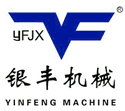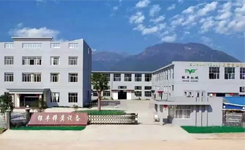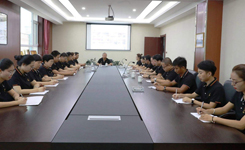Yinfeng 3D Wire Bending Machine Operating Procedure
Yinfeng 3D Wire Bending Machine Operation Procedure
1. Start the Equipment
Power On
Turn on the machine power.
Select or Create a Production Program
In the main interface of the computer operating system, select "Program Management."
From the list of existing production programs, choose the desired program, double-click to load, and prepare to execute.
If a new program is needed, select the "New Program" option, enter the name and parameter settings for the new program, and edit the operation steps for each functional axis.
2. Reset Functional Axes
Functional Axis Reset
Press the F1 key to reset all functional axes.
Press the F2 key to move all functional axes to the origin.
Double-click Axes
Double-click the "Axes" option to initiate the reset of all functional axes to the origin.
3. Zeroing and Program Editing
Zeroing
Ensure all axes have been reset to the origin.
Enter Program Editing Mode
Press the F7 key to enter program editing mode.
Select the Corresponding Functional Axis
Select the functional axis that needs to be operated (e.g., rotation bending axis, wire feeding axis, etc.).
4. Adjustment and Operation
Select Rotational MPG Control
Select the rotational MPG control to adjust the control angle value.
When using MPG control for rotation, the angle value will change accordingly.
Keyboard Input of Angle Value
The required angle value can be directly input via the keyboard for control.
Specific Operations for Each Functional Axis:
X-Axis (Rotation Bending Axis)
Function: Controls the rotation angle of the bending.
Purpose: The X-axis increases the flexibility of the bends, allowing for more complex bending operations. It enables the bend to rotate in different directions to achieve multi-angle bending.
Y-Axis (Wire Feeding Axis)
Function: Controls the feeding length of the wire.
Purpose: The Y-axis accurately feeds the wire into the bending area, ensuring the position of each bending point is accurate. This forms the foundation of the entire forming process, determining the final product's dimensions and shape.
Z-Axis (Cutter Axis)
Function: Controls the cutting action of the cutter.
Purpose: The Z-axis achieves wire cutting by controlling the cutter's movement. It can precisely cut the wire, ensuring the position and quality of each cut.
A-Axis (Bending Lifting Axis)
Function: Controls the up-and-down movement of the bending tool.
Purpose: The A-axis applies pressure through up-and-down movement to achieve wire bending. It can perform precise bending operations according to the set bending angle and force, ensuring the accuracy of each bending angle.
B-Axis (Tray Lifting Axis)
Function: Controls the up-and-down movement of the tray.
Purpose: The B-axis adjusts the height of the tray, providing proper support and positioning for the wire. It ensures the wire's position is stable during bending and supports the creation of complex 3D structures.
C-Axis (Rotational Mold Axis)
Function: Controls the rotational angle of the mold.
Purpose: The C-axis, in conjunction with the bending head, controls the rotational angle of the mold to achieve bends at different angles and directions, increasing the diversity and precision of the bending.
U-Axis (Wire Rotation Axis)
Function: Controls the rotational angle of the wire.
Purpose: The U-axis can adjust the wire's direction, allowing for bending operations on different planes. This function enables the forming machine to create complex 3D wire structures.
These seven axes work together to achieve multi-angle, multi-directional, and high-precision bending of wires, suitable for manufacturing various complex 3D wire products.





